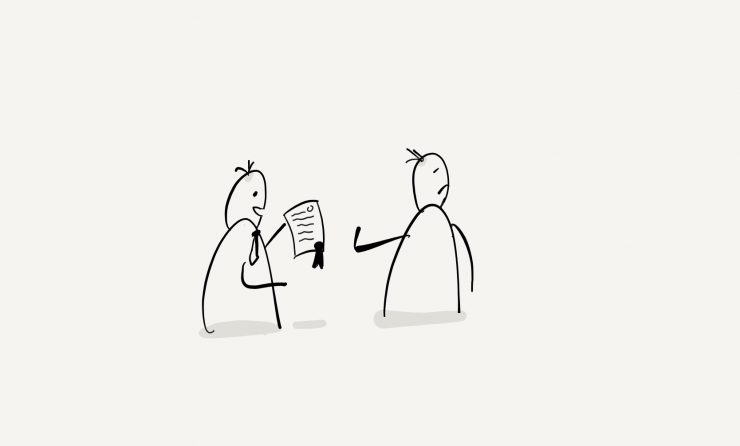There is a process in Swiss Direct Democracy called ‘Optional Referendum’. This enables any citizen to reactively challenge laws and regulations once they are issued by the parliament. Let me restate that: the parliament issues a law, and you as an individual have the right to say “Neh, I don’t like it”. Then you need to start collecting signatures to prove that you are not alone with this opinion. I already wrote about this in the organizational analysis.
So I took a closer look at how this process works in detail. So I created a service blueprint for Optional Referendums – download in full size here.

It is very similar to the process of changing the constitution, shown earlier. Luckily, it is quicker, muuuuch quicker, it should be done and dusted within a year. And there are 2 high-level differences:
- It mainly differs at the beginning, because it is a reactive process – it is not kickstarted by citizens having an idea, but rather by parliament issuing a law. This means there is an outside stimulus on citizens, and multiple citizens can react to that in parallel. And this is where one of the unique breakpoints lie: there is no official platform, physical or digital, where people can come together and coordinate their law-challenging efforts. However, once everyone collected their respective signatures, the number of signature is summed up. This is practical, and I see it as a delight, but it puts extra work on the state, as they need to remove duplicates. Ahh, a bit of a mess, really.
- And challenging a law differs from changing the constitution at the end as well. Because if enough people vote that a law should not take force, than it does not take force. And if not enough people vote against the law, than it becomes a law, case closed. So the outcome is much more clear and tangible compared to changing the constitution. However, it is a bit too clear – as explained in the next post about debates of direct democracy,





















[…] […]